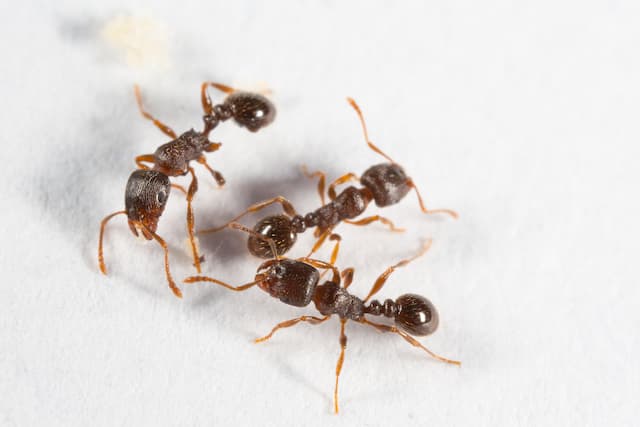Tetramorium caespitum or Pavement Ants as they are commonly known, are a type of ant that typically sets up home in your driveway, foundation, or another paved surface. They can become a nuisance, and they do so for homeowners across the Toronto area. There are effective always in controlling pavement ants. This article is written to help you identify whether you are dealing with pavement ants.
The worker ants vary in size from 2.5mm – 4mm in length and from a dark brown to a black in colour. They have parallel lines running on their head and thorax, also known as furrows. They have two spines along their back and the pedicel, or third segment, has two nodes. The drone and queen both have wings and are about twice the size of the worker ants. They both have furrows on their head and thorax, but the male pavement ant lacks the spines that the queen has.
All types of these ants have six legs and antennae. The antenna is comprised of 12 segments with an additional three segments that form a club-like device on the end of the antenna. On the tip of the abdomen, there is a small stinger that the ant uses to defend its territory and attack nearby colonies.
Their nests average 3000 – 4000 ants, and several queens, and are comprised of numerous chambers underground. The exit holes they make in the cracks of pavement and slabs are vent holes for the nest. They feed on a wide variety of foods including dead insects, meat, sweets and other crumbs left behind by humans. They prefer greasy types of foods; however, they will eat whatever is easily accessible.
Reproduction occurs in June and July, when the winged drones, both male and female, swarm outside the nest looking for a mate. After mating, the female ant will seek out a new location and form a nest where she will lay her eggs. As the nest grows larger, more queens will be allowed into the nest to ensure growth and stability. Other than observing their behaviour outside the nest, very little is known about them.

